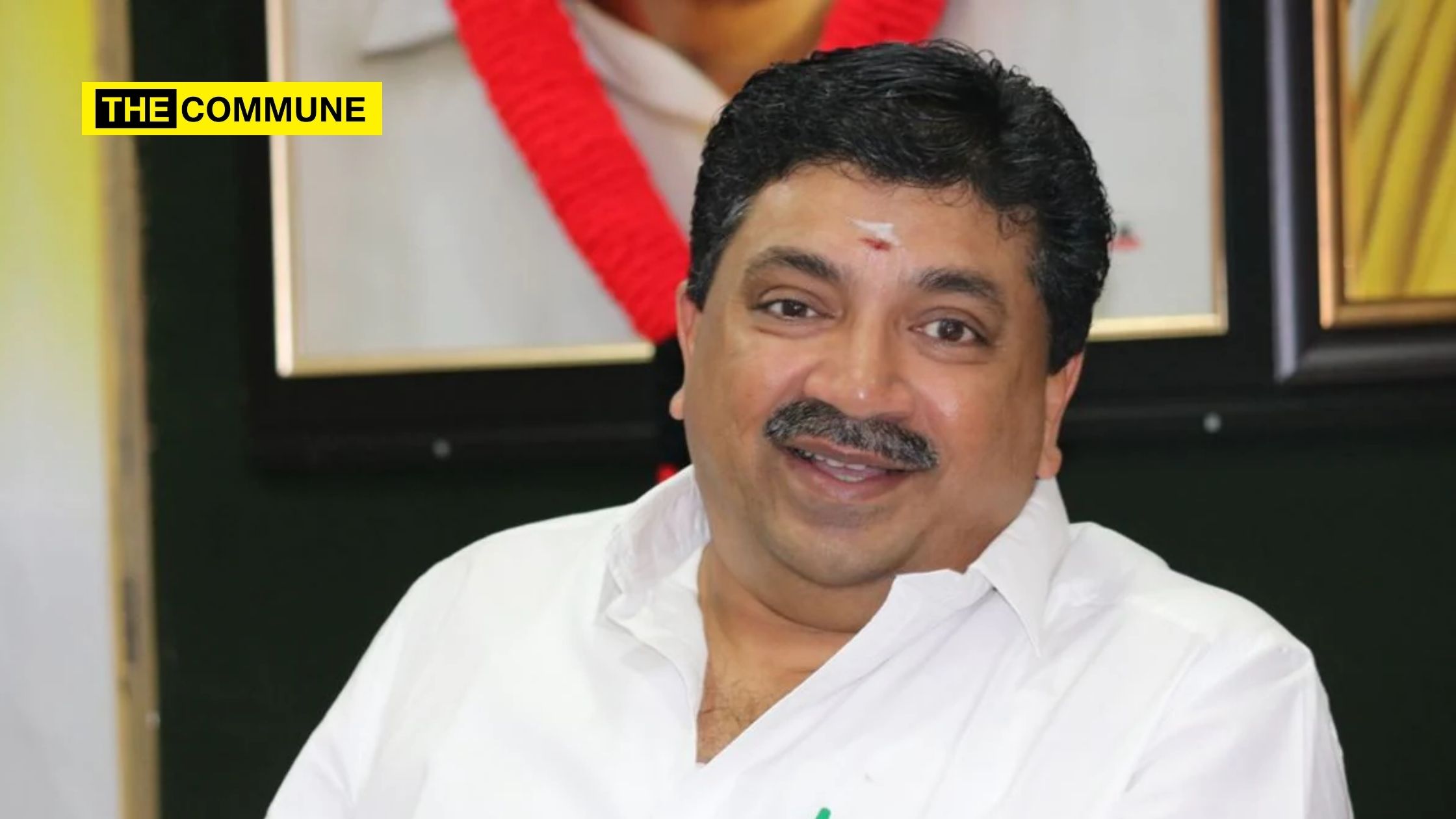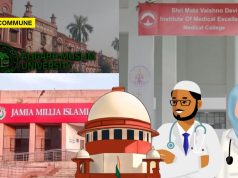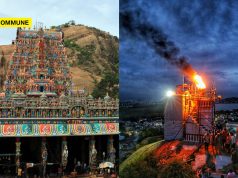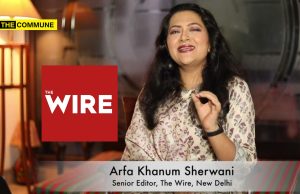
Palanivel Thiagarajan (popularly known as PTR), a fourth generation political dynast currently a Minister in the MK Stalin-led DMK government has a habit of baiting the Brahmin community to score political points. He once even went to the extent of invoking a caste identity of a woman journalist and abusing her just because she posted on social media that a top leader’s son is involved in a mega land grab.
His latest attack on Brahmins coincides with the Prime Minister’s introduction of the Pradhan Mantri Vishwakarma Yojana, aimed at empowering traditional artisans who have faithfully preserved their skills and heritage across generations.
PTR in a recent speech raised questions about the rationale behind promoting hereditary businesses. Speaking at the “India’s Social Justice Festival” organised by Madurai Law College students at the Madurai World Tamil Sangham Hall, he said, “Education brings progress to all, this is an undeniable truth. The ones who gave us all the opportunity to gain that are the upper caste people (hinting at Brahmins). In 1928, my grandfather while speaking at the Self-Respect Conference, PT Rajan asked why should there be a separate community of priests (archakas). We follow all rituals, so why are you entitled to enter the garbagruha and perform pujas? A backlash ensued and they said that only they knew the Slokas and Sanskrit – because only they had studied that, they did not give others an opportunity to learn them. There are a few errors in this argument, the first being there is no rule that yours is the only way to worship God and the other is that you did not give others the opportunity to study.”
He further added “After this government came into power, the Chief Minister has been correcting the second mistake every year. In the past, we have brought all the plans that were made in the era of Kalaignar to fruition – one being that anyone can become a priest scheme. After this government came to power in 2021, yesterday you would have seen that three women priest have received their appointment letters. When we were doing this, the first thing I would like to say is about the manifesto of the Justice Party in 1920. During the election campaign, they made a statement. They asked, how can a community with a population of 3% occupy 40% of the Munsif jobs, 50% of the Government Office jobs, and a majority of the doctor jobs, how can a society with a population of 3% have all the facilities and opportunities? The reason for this is that they are the only ones who have been given the opportunity to study. That’s why we brought in Compulsory Education (Kattaaya Kalvi), Reservation, and Communal GO.”
He added, “Upper caste were the ones who broke the model that you should do only what your father did (kulakalvi). Because the upper caste, when they got a job as a collector, a judge, a Chartered Accountant, a banker, a lawyer, they left their priestly jobs and took up those. So, the upper caste were the ones who showed us that there is no connection between your birth and the work you do. So if you come to us and tell us that you should only do what your father did, how is it justified?”
He continued, “I, as a 4th generation Dravidian, have been trying to achieve social justice for more than 100 years”.
Full Video pic.twitter.com/stAfhE5grT
— Dravidian Insights (@dstock_insights) September 14, 2023
While PTR has mentioned the upper caste in his speech, anybody familiar with the Dravidian political rhetoric can make out that he is targeting Brahmins. It is pertinent to mention that PTR himself belongs to a wealthy landed Mudaliar family and falls under the category of the so-called “upper caste”. In Tamil Nadu, the so-called forward/upper caste include Nagarathars, Thondai Mandala Mudaliars, Balija Naidu, Reddiyar, among others. It is these ‘upper/forward castes’ that form the core vote bank of the DMK which has been inherited from its predecessor Justice Party, a party formed by ego-hurt landed wealthy caste leaders. In fact, the Justice Party, which PTR often boasts about and takes pride in has a history of ill-treating fellow members from the Scheduled Caste. M.C. Rajah, a leader from Dalit community, severed ties with Justice Party over its treatment of Dalits.
But PTR and his Dravidian ilk have gone on to project that “upper caste” meant “Brahmins” often targeting the for all things wrong in the Tamil society. The reason why PTR and his Dravidian ilk often target the Brahmin community is to hide their duplicity on social justice.
Now let us come to PTR’s latest lecture on social justice that has raised several critical questions, highlighting what can be perceived as the inconsistency within his own community, party, and his own self. Here are some questions for the DMK Minister.
1. While PTR thumps his chest about the DMK breaking the Brahminical hegemony in temples through ‘all caste can become archakar’ scheme, will he also advocate for the removal of Vellalar dominance in Aadheenams and the inclusion of all castes in the mutts run by them?
2. Why do Vellalar Aadheenams oppose the traditional practice of Vanniyars and Thevars wearing the poonool/janeu (sacred thread), despite it being a hereditary custom of these communities? Is this linked to the Vellalars’ desire to exert dominance over these groups through Aadheenams?
3. PTR often emphasises that he entered politics due to his family’s three-generation involvement in the field. If he aims to preserve this multi-generational legacy, then why should archakas, with similarly long-standing family traditions, be excluded?
4. Despite PTR’s assertions, Brahmins are notably scarce in political and administrative roles in Tamil Nadu today. In contrast, Vellalars, who constitute just 6% of the state’s population, occupy more than 50% of government positions. What accounts for this preferential treatment by the Dravidian party?
5. Concerning the DMK, why do Vellalars predominantly hold the positions of district secretaries in Vanniyar and Thevar regions like Vizhupuram and Thanjavur? Why is the DMK not ensuring proportional representation for Vanniyars and Thevars?
6. DMK has earned the reputation of being a party of the Vellalars, by the Vellalars, and for the Vellalars. Why has the DMK never permitted a non-Vellalar to hold the positions of party president or Chief Minister?
7. While the DMK criticises the PMK as a casteist party for having Vanniyars (the largest voting bloc in the state) in prominent leadership positions, why shouldn’t the DMK, which predominantly features Vellalars in its leadership, be subjected to the same scrutiny?
8. Why has PTR not issued a statement condemning his caste organisations, which are protesting the use of the term “Devendra Kula Vellalars” to address the Scheduled Caste community?
9. How did PTR’s family come to possess extensive land holdings that originally belonged to a Maravar Zamin family in Theni?
10. Why has the PTR family frequently clashed with Thevar leaders within their own party? Are the allegations of Thevars regarding casteism within the PTR family accurate? Do they indeed practice a two-tumbler system in their homes?
The Dravidian Model of social justice, is nothing but a scam meant to cover up the original perpetrators of casteism through fraudulent and deceitful means of perpetually peddling hatred against one politically insignificant community and making them the eternal scapegoat.
This article is based on the X thread of Aravindalochanan Govindan.
Vallavaraayan is a political writer fighting Dravidianists.




